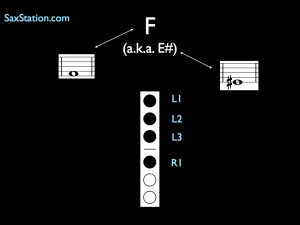Question:
“How do I play E# and B# on Saxophone?”
-Ray
My response:
E# is like F and B# is like C.
E to F is a half step and B to C is also a half step.
So if you raise E by a half step with a sharp, you get to F.
And if you raise B by a half step with a sharp, you get C.
Similarly, Fb is like E and Cb is like B.
Ray’s response:
It just had me confused when i could not find any fingerings for lower Esharp
That’s made things a lot clearer.now back to practise on those scales cheers
thanks again
Ray




That’s very interesting to know for the self-taught baby boomers!! Thanks!!
Sure. I think I have heard similar questions a few times.
Hi, interesting.
I am new to music theory.
With piano. the notes A,B,C,D,G,A ALL HAVE SHARPS (AND FLATS) . B and E do not as there are no black keys. Also each next key on all keys, is called a half step, a semi-tone.
My question is: Is E the same difference (in sound frequency) from F, as, say; A is from A#?
Or, is the distance from E to F, the same distance as from A to B, only there is no semi tone between E and F (for some reason).
I hope you can shed some light on this and understand what I mean.
I’m learning soprano sax.
I can’t quite understand why the term E# would ever be used, as that’s what The F represents.
I guess i’m assuming all music relates to a pianos layout.
Kind regards,
Liam
Hi Liam,
E to F is a half step, A to B is a whole step.
In music, you tend to see only sharps or flats at a given point. For example, if there is already an F#, it can make more sense to write E# rather than F natural.
-Neal